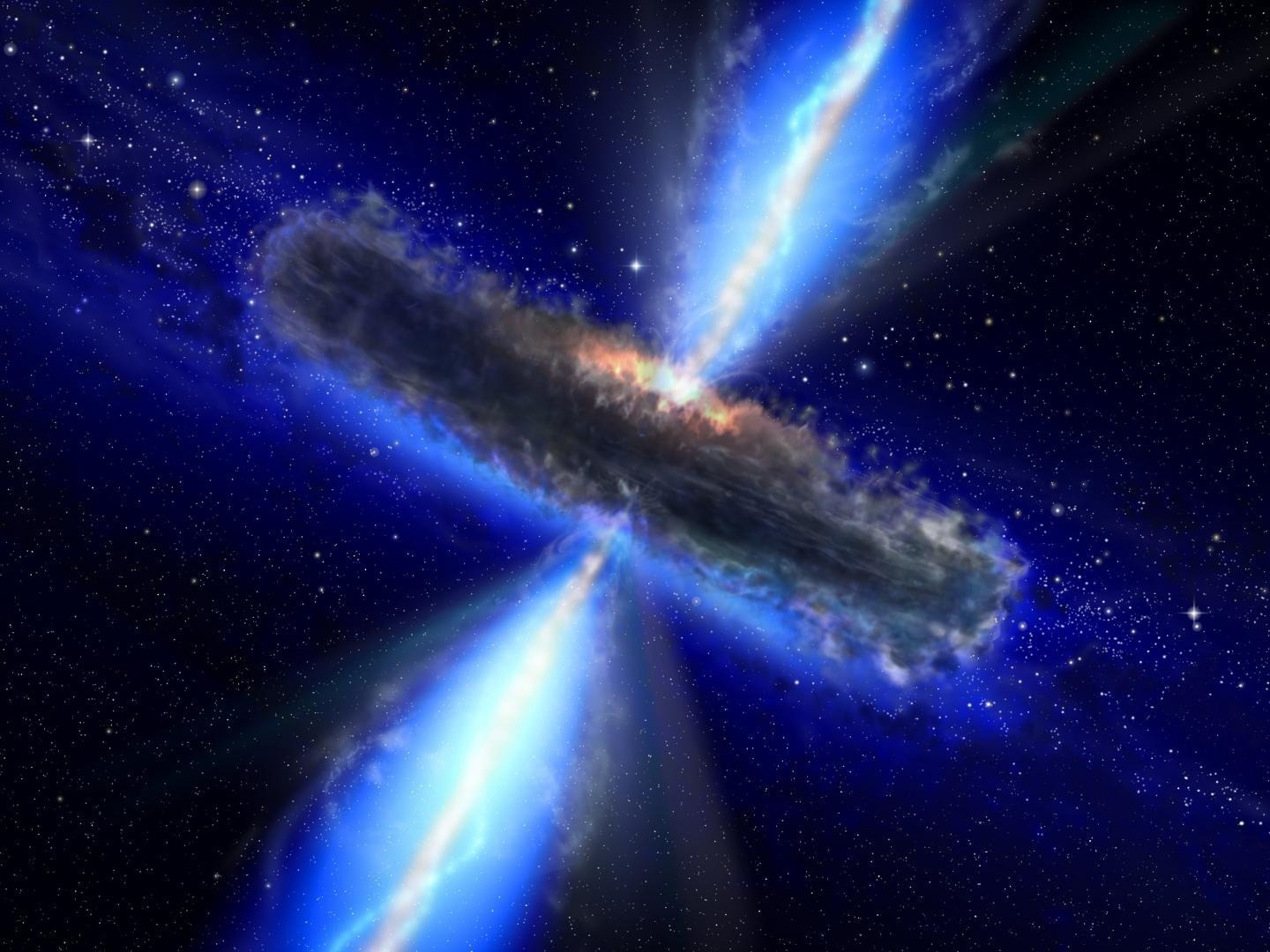Supermassive black holes are assumed to be in the center of almost all big galaxies. The celestial bodies consume stars, dust, and gas from the galaxy. They are even capable of gaining weight beyond some dwarf galaxies.
 Supermassive black holes can be obscured by a doughnut-shaped ring of dust and gas, known as a “torus.” Image Credit: ESA/NASA, the AVO project and Paolo Padovani
Supermassive black holes can be obscured by a doughnut-shaped ring of dust and gas, known as a “torus.” Image Credit: ESA/NASA, the AVO project and Paolo Padovani
Researchers can estimate when some black holes had their largest development spurts by taking into account a black hole’s mass, rate of feeding, and the quantity of radiation in the area. They can learn more about the universe’s past from that knowledge.
A separate Dartmouth study is shedding light on the mystery of supermassive black holes in the rapid growth stage, known as active galactic nuclei or AGN, and is being conducted in parallel with advances such as new images captured by NASA’s James Webb Space Telescope, which are helping scientists understand some of the most potent forces in the universe.
The light signatures from these objects have mystified researchers for over a half-century.
Tonima Tasnim Ananna, Study Lead Author and Postdoctoral Research Associate, Dartmouth College
Different hues can be seen in the light that come from supermassive black holes close by. Their brightness and spectral characteristics can also change.
Until recently, scientists thought that the variations depended on the viewing angle and the amount a black hole’s “torus,” a doughnut-shaped ring of gas and dust that often encircles active galactic nuclei.
However, technical studies conducted by Ananna and others are questioning this approach. Professors of physics and astronomy, Ananna and Ryan Hickox, have discovered that the black holes appear different because they are, in fact, at different stages of their life cycles.
According to the recent Dartmouth study, a supermassive black hole’s growth rate is strongly correlated with the amount of dust and gas that surrounds it. Black holes that are feeding quickly expel gas and dust in their wake. It is, therefore, more likely to look brighter and appear unobscured.
The study offers some of the best evidence to date that supermassive black holes with distinct light signatures could differ significantly from one another and that these variations cannot be explained just by the observation’s position within or outside of an AGN’s torus.
This provides support for the idea that the torus structures around black holes are not all the same. There is a relationship between the structure and how it is growing.
Ryan Hickox, Study Co-Author and Professor, Physics and Astronomy, Dartmouth College
The revelation that the feeding rate — and not the viewing angle — determines the light signatures of supermassive black holes is the culmination of a ten-year study of neighboring AGNs by a fantastic company employing the high-energy NASA X-ray observatory Swift-BAT.
Ananna developed a computational method to evaluate the impact of obscuring matter on the measured characteristics of black holes for the study, which was published in The Astrophysical Journal.
The research paper conclusively demonstrates the need to reconsider the current theory of AGN, which compares veiled and unobscured AGN despite their apparent differences owing to viewing angle.
Ananna stated, “Over time, we have made many assumptions about the physics of these objects. Now we know that the properties of heavily hidden black holes are significantly different from unobscured AGN.”
In 2020, Ananna was chosen as one of Science News’ top 10 “Scientists to Watch.”
The solution to the puzzling space conundrum should enable scientists to build more accurate theories concerning the universe’s growth and the formation of black holes.
Hickox added, “One of the biggest questions in our field is where do supermassive black holes come from. This research provides a critical piece that can help us answer that question, and I expect it to become a touchstone reference for this research discipline.”
Journal Reference:
Ananna, T. T., et al. (2022) BASS. XXX. Distribution Functions of DR2 Eddington Ratios, Black Hole Masses, and X-Ray Luminosities. The Astrophysical Journal. doi:10.3847/1538-4365/ac5b64.